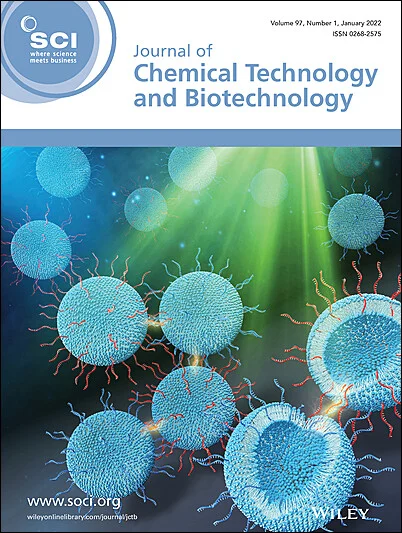Tanya Girish, Spandana V. Prasad, Nivedita I. Patil, Deepthi Shetty, Sneha Nayak
求助PDF
{"title":"Advances in food azo dye detection through nanoparticle modified electrochemical sensors with a focus on sustainable nano-materials","authors":"Tanya Girish, Spandana V. Prasad, Nivedita I. Patil, Deepthi Shetty, Sneha Nayak","doi":"10.1002/jctb.7887","DOIUrl":null,"url":null,"abstract":"<p>Azo dyes are widely employed as colorants predominantly in food and beverage industries owing to their vividity and versatility. They are the largest class of dyes and form a major group among the colourants certified by the Food and Drug Administration authority. These vibrant dyes are popular due to their stability, consistency and low cost. Despite their benefits such as improving the appearance and aesthetic value of consumer foods, they are hazardous to human health as well as the environment. They are proven to cause carcinogenic and mutagenic effects in the long run alongside causing allergic reactions. Hence, strict regulations have been brought forth in order to monitor and control the employment of these dyes in food products. Nanomaterial-based electrochemical sensors are used for azo dye detection due to their sensitivity and selectivity in determination of azo dyes in food. Preparation of nanomaterials through conventional methods produces hazardous chemicals. Hence, there is a need to devise eco-friendly routes of nanoparticle synthesis in order to ensure sustainability and circular economy. This review throws light on the efficacy of nano-based electrochemical detection of azo dyes in various food matrices and emphasizes the significance of sustainable nanomaterials. © 2025 Society of Chemical Industry (SCI).</p>","PeriodicalId":15335,"journal":{"name":"Journal of chemical technology and biotechnology","volume":"100 10","pages":"1989-2003"},"PeriodicalIF":2.4000,"publicationDate":"2025-05-19","publicationTypes":"Journal Article","fieldsOfStudy":null,"isOpenAccess":false,"openAccessPdf":"","citationCount":"0","resultStr":null,"platform":"Semanticscholar","paperid":null,"PeriodicalName":"Journal of chemical technology and biotechnology","FirstCategoryId":"5","ListUrlMain":"https://scijournals.onlinelibrary.wiley.com/doi/10.1002/jctb.7887","RegionNum":4,"RegionCategory":"生物学","ArticlePicture":[],"TitleCN":null,"AbstractTextCN":null,"PMCID":null,"EPubDate":"","PubModel":"","JCR":"Q3","JCRName":"BIOTECHNOLOGY & APPLIED MICROBIOLOGY","Score":null,"Total":0}
引用次数: 0
引用
批量引用
Abstract
Azo dyes are widely employed as colorants predominantly in food and beverage industries owing to their vividity and versatility. They are the largest class of dyes and form a major group among the colourants certified by the Food and Drug Administration authority. These vibrant dyes are popular due to their stability, consistency and low cost. Despite their benefits such as improving the appearance and aesthetic value of consumer foods, they are hazardous to human health as well as the environment. They are proven to cause carcinogenic and mutagenic effects in the long run alongside causing allergic reactions. Hence, strict regulations have been brought forth in order to monitor and control the employment of these dyes in food products. Nanomaterial-based electrochemical sensors are used for azo dye detection due to their sensitivity and selectivity in determination of azo dyes in food. Preparation of nanomaterials through conventional methods produces hazardous chemicals. Hence, there is a need to devise eco-friendly routes of nanoparticle synthesis in order to ensure sustainability and circular economy. This review throws light on the efficacy of nano-based electrochemical detection of azo dyes in various food matrices and emphasizes the significance of sustainable nanomaterials. © 2025 Society of Chemical Industry (SCI).
纳米粒子修饰电化学传感器检测食品偶氮染料的研究进展,重点是可持续纳米材料
偶氮染料因其鲜亮性和多功能性被广泛应用于食品和饮料行业。它们是最大的一类染料,是食品和药物管理局认证的着色剂中的一个主要群体。这些充满活力的染料因其稳定性、一致性和低成本而广受欢迎。尽管它们有改善消费者食品外观和审美价值等好处,但它们对人类健康和环境都是有害的。事实证明,长期来看,它们会导致致癌和诱变,同时还会引起过敏反应。因此,为了监测和控制这些染料在食品中的使用,制定了严格的法规。纳米材料电化学传感器对偶氮染料的检测具有灵敏度和选择性,可用于食品中偶氮染料的检测。通过常规方法制备纳米材料会产生有害的化学物质。因此,有必要设计出环保的纳米颗粒合成路线,以确保可持续性和循环经济。本文综述了纳米电化学检测各种食品基质中偶氮染料的有效性,并强调了可持续纳米材料的重要性。©2025化学工业学会(SCI)。
本文章由计算机程序翻译,如有差异,请以英文原文为准。



 求助内容:
求助内容: 应助结果提醒方式:
应助结果提醒方式:


